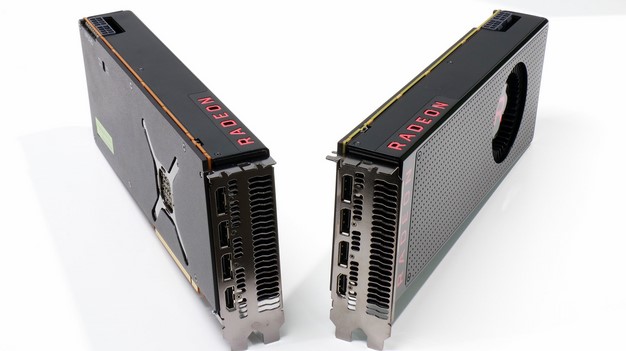Radeon RX Vega 64 And RX Vega 56 Review: AMD Back In High-End Graphics
Performance Summary: AMD's new Radeon RX Vega 64 and Radeon RX Vega 56 help propel the company's consumer GPU architecture and product line back to a competitive position in the enthusiast-class GPU market. Radeon RX Vega 64 is neck-and-neck with NVIDIA's GeForce GTX 1080, winning some and losing some but showing flashes of strength in DirectX 12-based game titles and benchmarks, like The Division and 3DMark Time Spy. Vega 64 also maintains generally better minimum frame rates versus GTX 1080 overall, though we didn't get time to dig in with frame pacing or micro-stutter measurements just yet.
Radeon RX Vega 56, however, in the upper-midrange segment, is a more credible threat. Vega 56 handily out-performs a GeForce GTX 1070 across the board, with few exceptions. When it comes to DX12 gaming, Radeon RX Vega 56 stretches its legs and leads even more over the similarly-priced NVIDIA GTX 1070.
Radeon RX Vega 56, on the other hand, was more tame from a power, noise, and heat standpoint, with more reasonable draw and slightly better acoustics - though noise levels were not dramatically better and the card was still louder than even a 1080 Ti under load.

AMD's FreeSync Value Proposition Is Likely Underrated

AMD Radeon RX Vega 64 And Radeon RX Vega 56 - Find Them On Amazon
And there-in lies the rub. AMD's Radeon RX Vega line-up as it exists today is a compelling offering, with performance at the $499 price point for RX Vega 64 that puts it roughly on equal footing with a GeForce GTX 1080, save for higher power draw and a bit more noise. Radeon RX Vega 56 is a notably faster $399 offering versus NVIDIA GeForce GTX 1070 cards, again with similar caveats. That said, NVIDIA's GeForce GTX 1080 has been out for over a year now and it may not be long before team green tosses another volley.
Regardless, AMD's Vega GPU architecture shows promise and if the company can be profitable with its semi-exotic, HBM2 chip-and-wire, multi-chip module design, it could spell good things for future iterations of Vega, as yield and performance is optimized. For their respective price points currently, AMD Radeon RX Vega 64 and Radeon RX Vega 56 are compelling, powerful, enthusiast gaming GPUs. If you don't mind a little more power draw and noise floor, Radeon RX Vega 56 is a solid win and Radeon RX Vega 64 squares off well versus rival solutions.

Radeon RX Vega 56

Radeon RX Vega 64
|
|






